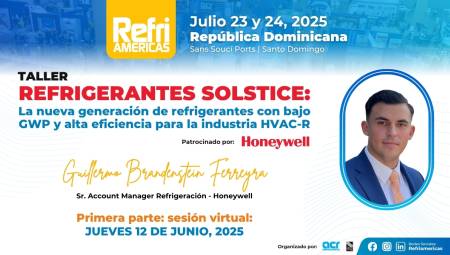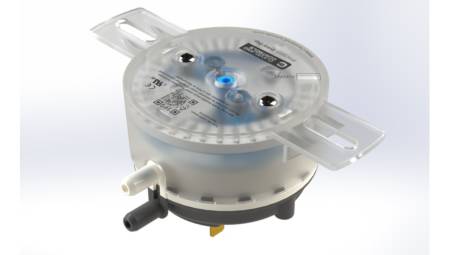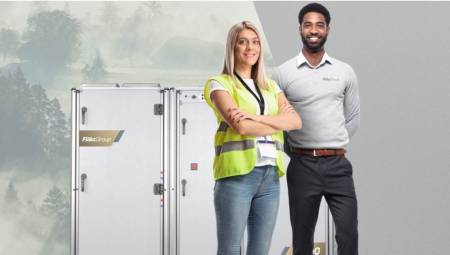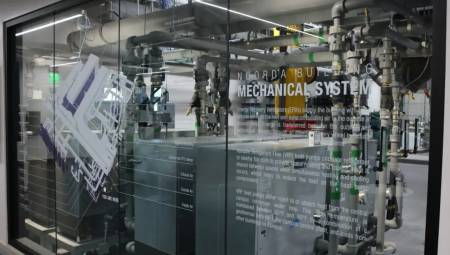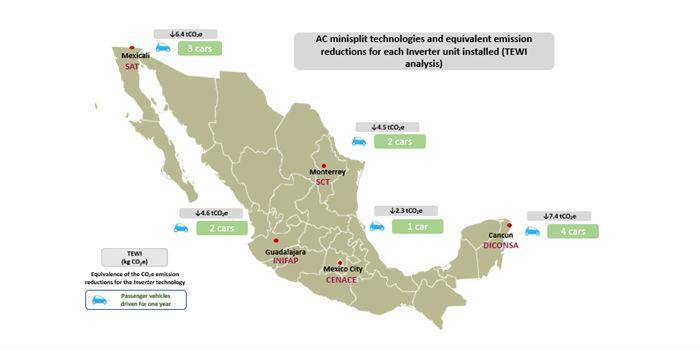 Mexico. The Comparative Study of Energy Efficiency in Air Conditioning was achieved within the framework of the "Program of collaboration with the private sector for the dissemination of Japanese air conditioning technologies friendly to the environment" that fosters the alliance between the public and private sectors to promote environmentally friendly refrigerants.
Mexico. The Comparative Study of Energy Efficiency in Air Conditioning was achieved within the framework of the "Program of collaboration with the private sector for the dissemination of Japanese air conditioning technologies friendly to the environment" that fosters the alliance between the public and private sectors to promote environmentally friendly refrigerants.
This is intended to support Mexico in meeting the commitments of the Montreal Protocol and the Kigali Amendment to reduce 80 percent of hydrofluorocarbon (HFC) consumption in the coming decades. In addition, it contributes to mitigating the country's energy demand.
The study was developed by the Japan International Cooperation Agency (JICA), the National Commission for the Efficient Use of Energy (CONUEE) and Daikin.
The analysis was carried out in two stages, the first from September 7 to November 9, 2018 and the second from April 15 to June 25, 2019. During these periods, the energy savings, environmental and economic impacts that could be achieved by the introduction of the inverter technology with R32 refrigerant in minisplit equipment were evaluated.
The air conditioning sector is one of the main users of hydrofluorocarbons (HFCs). The most used in residential and commercial air conditioning systems has been the refrigerant HCFC-22 that; it has gradually been replaced by HFC R-410A and currently, among the alternatives with the lowest Global Warming Potential (GWP) are hydrocarbons and the refrigerant R32 that has a GWP of 675, that is, 68 percent lower than R410A. In Mexico, R32 is still a new refrigerant on the market, however, in countries such as Japan it has been in use for more than 10 years in both the commercial and residential sectors.
The comparison of the two minisplit equipment: inverter and on-off (conventional) evaluated the percentage of energy savings and the climate impact. A record of energy and temperature under different climatic conditions was carried out in the two aforementioned stages: the first, in Mexicali, Monterrey, Guadalajara, Mexico City and Cancun and the second in Monterrey, Guadalajara and Mexico City. The results showed an average saving of 55 percent in electrical energy consumption with R32 refrigerant inverter technology versus R410A refrigerant on-off minisplit.
Each air conditioning unit (with an approximate capacity of 3.5 kW or 1 TR) was installed in each of the headquarters buildings: National Energy Control Center (CENACE) in Mexico City, National Institute of Forestry, Agricultural and Livestock Research (INIFAP) in Guadalajara, Secretariat of Communications and Transportation (SCT) in Monterrey, the Customs Recognition Offices of the Tax Administration Service (SAT) in Mexicali and the administrative offices of Deconsa Cancun.
Both teams were managed with an intelligent controller to operate alternately and maintain similar thermal load conditions. In all the venues, a working schedule was considered from Monday to Friday from 8:00 a.m. to 6:00 p.m., for data collection. The National Institute of Electricity and Clean Energies (INEEL) was in charge of measuring the energy consumption of the study while consultants members of the College of Environmental Engineers of Mexico (CINAM) carried out the analysis of economic and environmental impact.
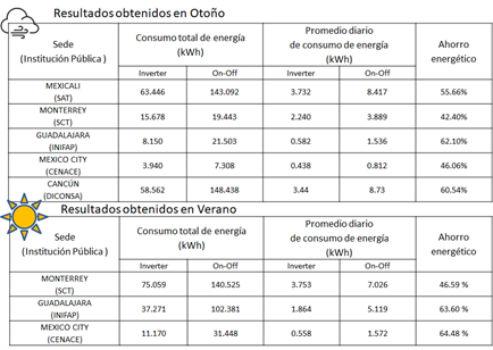
Table 1.
The greenhouse gas (GHG) emission reductions identified by each air conditioning unit are between 46 percent and 57 percent, which according to a comparative analysis by CINAM, are equivalent to stopping traveling between 6,000 and 31,000 km in a private vehicle for each air conditioning unit that is replaced. In a projection to 2030, 9.6 million tons of carbon dioxide (CO2e) emissions equivalent to the GHGs of a carboelectric plant installed in Coahuila would be reduced (see main image).
* The GHG reductions were evaluated through the TEWI indicator, (Total Equivalent Warming Potential), which considers direct CO2e emissions from refrigerant leaks in operation and at the end of the life of the equipment, as well as indirect CO2e emissions from electricity consumption throughout the useful life of the equipment.





